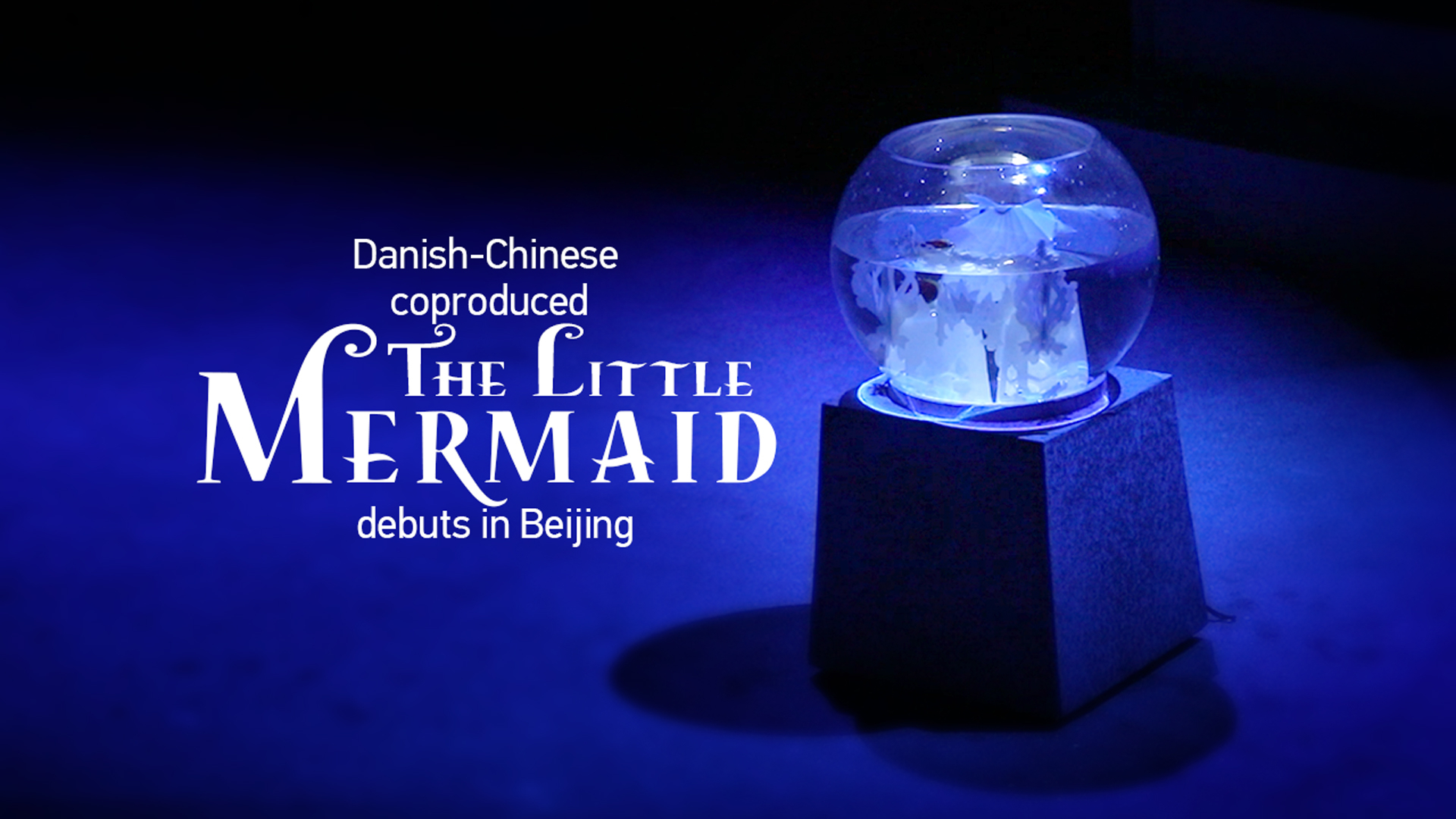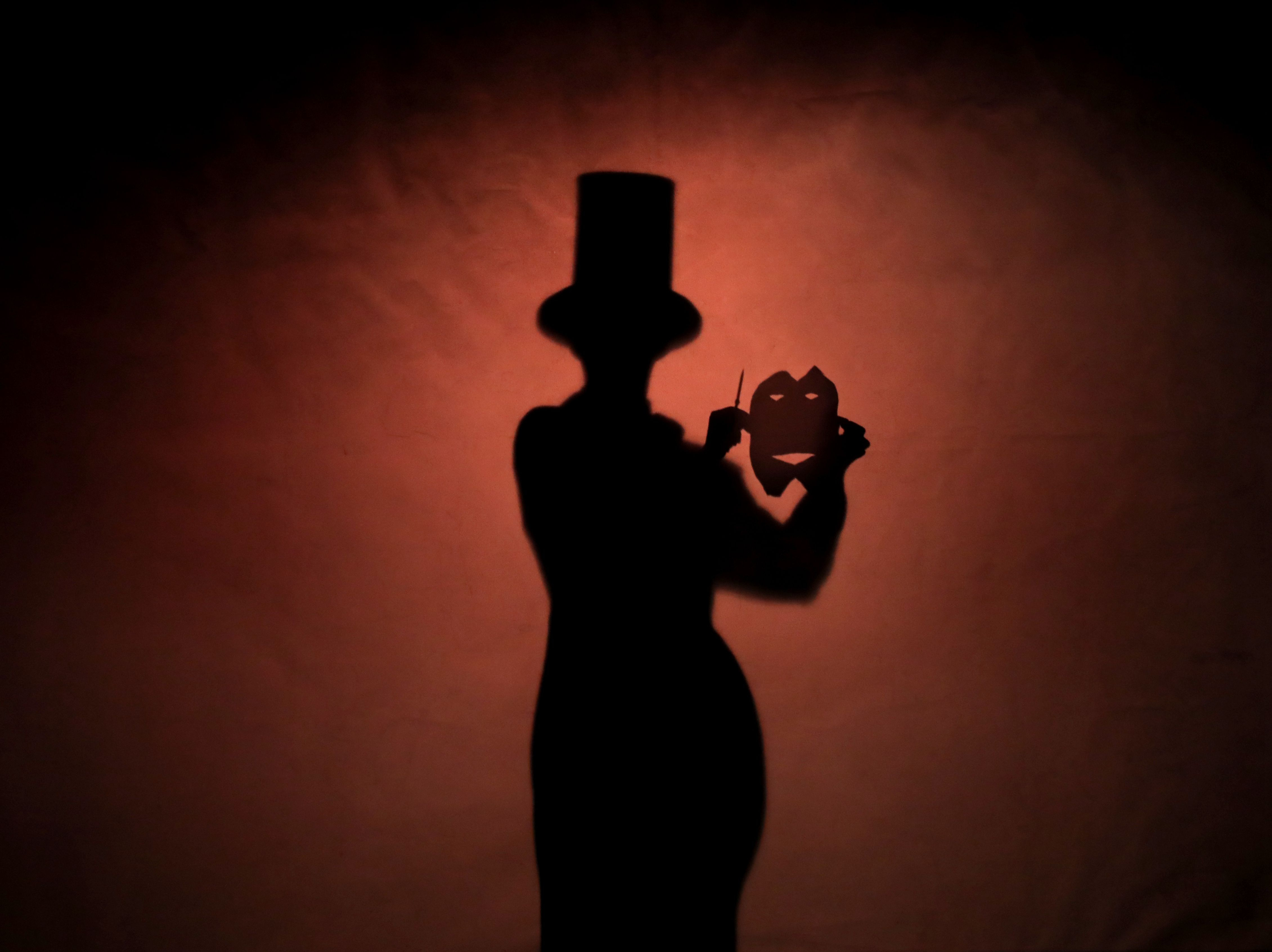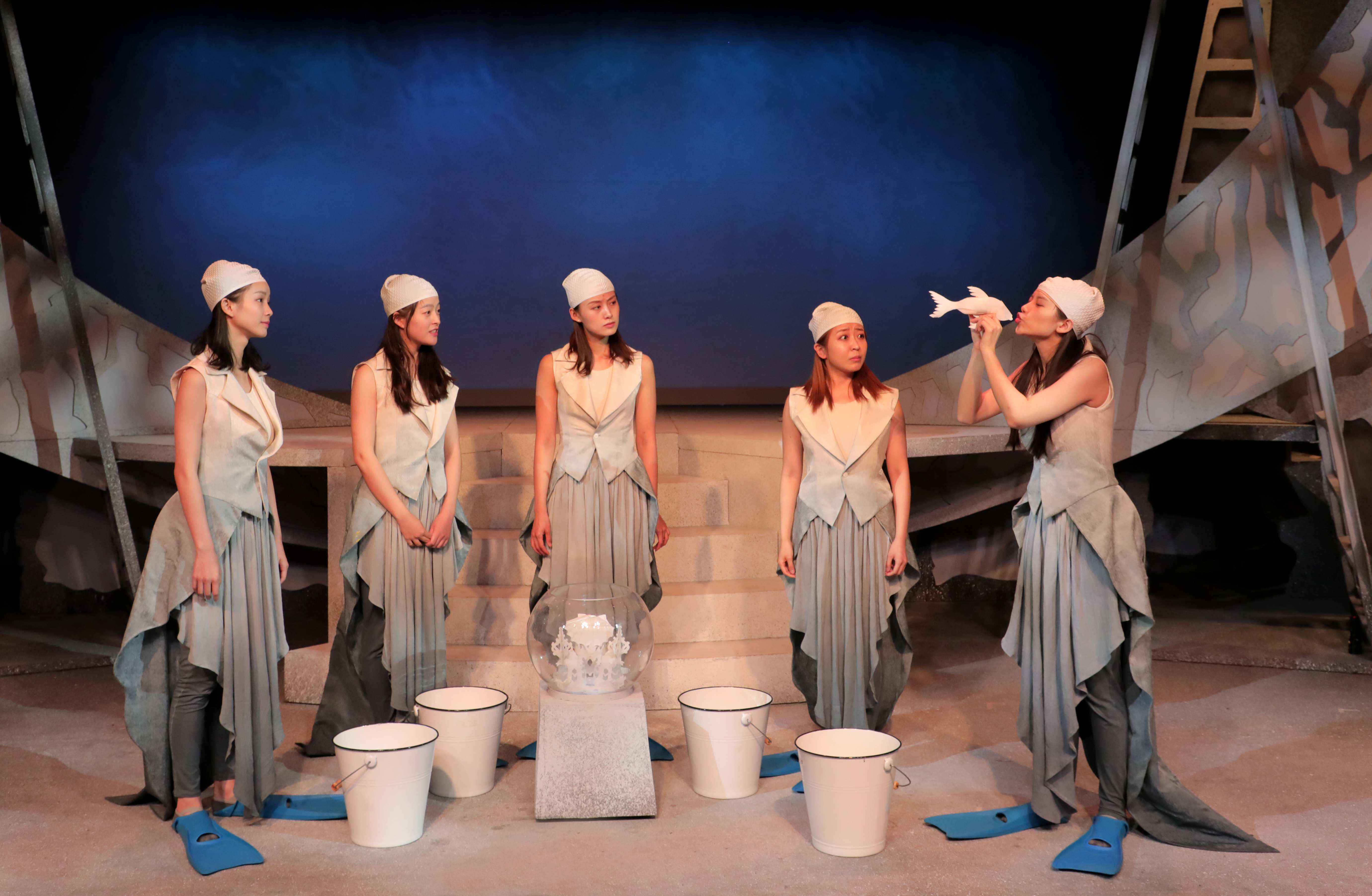

A blue undersea palace surrounded by paper-cut aquatic plants and corals, princesses wearing flippers rather than fishtails, and mysterious sounds of seashells and waves – welcome to the little mermaid’s world!
The famed children’s play “The Little Mermaid” made its debut at the China National Theater for Children in Beijing on Saturday, the opening day of the 9th China Children's Theater Festival.
Adapted from the fairy tale by Danish writer Hans Christian Andersen, it is a co-production by Danish and Chinese artists.

A stage photo of “The Little Mermaid.” /Photo courtesy of the China National Theater for Children
A challenging play
Danish director Torkild Lindebjerg, who is also the play's scriptwriter, was skeptical at first when he was invited to direct "The Little Mermaid."
"The challenge of 'The Little Mermaid' is that half of the play is underwater. How do you create an environment in the water?" said Lindebjerg.
But as he tried and contemplated, an idea was born: the play starts with buckets of water, from which the palace, shells, fish and mermaids emerge, to create an undersea world.
As the story goes, the stage is divided by an arc into two parts, clearly distinguished from each other through lighting techniques. One part is the little mermaid's world under water, steeped in cold blue light, and the other part is the prince's world on land, steeped in warm light.
The play pays tribute to Andersen in its stage design, who is as good at storytelling as he is at paper cutting. Paper cuts run through the entire play from the prince's royal crown to fish that play with the little mermaid.

A stage photo of “The Little Mermaid.” /Photo courtesy of the China National Theater for Children
Children need to know tragedy
Although the Andersen's story is known to children around the world, the 1989 Disney's movie of "The Little Mermaid" popularized and stereotyped the image of the heroine to a red-haired girl who gets her happy ending.
"What we are doing here is being as honest as we can to the original story of Andersen," Lindebjerg said, "That is a sad story. It is in many ways a tragedy and far away from the Disney version."
Henrik Kohler, the play's executive consultant and CEO of Teatercentrum, a theater center in Denmark for children and adolescents, was planning and fostering the play, together with Yin Xiaodong, the head of the China National Theater for Children, for two years.
"Children need good stories in their lives," Kohler said, "It is important to inspire them, to give them the possibility to reflect upon their lives, and to give them a chance to experience something that enriches their lives when they are growing up."
He said Andersen's stories are not just happy stories. "It is also stories about the general sides of life. It starts about how thing can go wrong. But that's important for children to know that as well. They need to know that life is full of different facets," he added, saying that this was true for Danish as well as Chinese children.

A stage photo of “The Little Mermaid.” /Photo courtesy of the China National Theater for Children
Bridge different cultures
Having both a Danish director and a Chinese director, “The Little Mermaid” assembles an international team, with its play script, sight design and musical composition contributed by Danish artists, while casts and technicians are from China.
That’s why a scene combining Danish and Chinese cultures pops up. When a sister of the little mermaid celebrates her birthday, she eats a bowl of noodles, a Chinese tradition wishing longevity.
“We combine the good traditions of our two countries to give children the best opportunity to experience good art,” said Kohler.
The cooperation is just a start, as the two sides will adapt the Chinese legend of the mermaid in the East China Sea for a Danish audience next year.

A stage photo of “The Little Mermaid.” /Photo courtesy of the China National Theater for Children
"The cooperation on 'The Little Mermaid' and 'The Mermaid of the East China Sea' strengthens the exchanges between different countries and nationalities," said Yin Xiaodong, who hailed it a genuine dialogue between Chinese and Danish cultures.
Such a combination has eventually worked out a good example of cultural exchanges and mutual learning.
Themed in "Let dramas enter children's lives," the festival will present 57 theatrical productions from 14 countries, including the U.S., Denmark, Romania, Japan and South Korea, for 191 performances across the country.
Related theatrical forums and workshops will also be held during the festival, which will last till August 11.
Director: Wu Yan
Video editor: Wang Dawei
Videographer: He Zhu
Top image designer: Zhang Xuecheng
Copy editor: Bertram Niles
Chief editor: Pei Jian

Copyright © 2018 CGTN. Beijing ICP prepared NO.16065310-3
Copyright © 2018 CGTN. Beijing ICP prepared NO.16065310-3